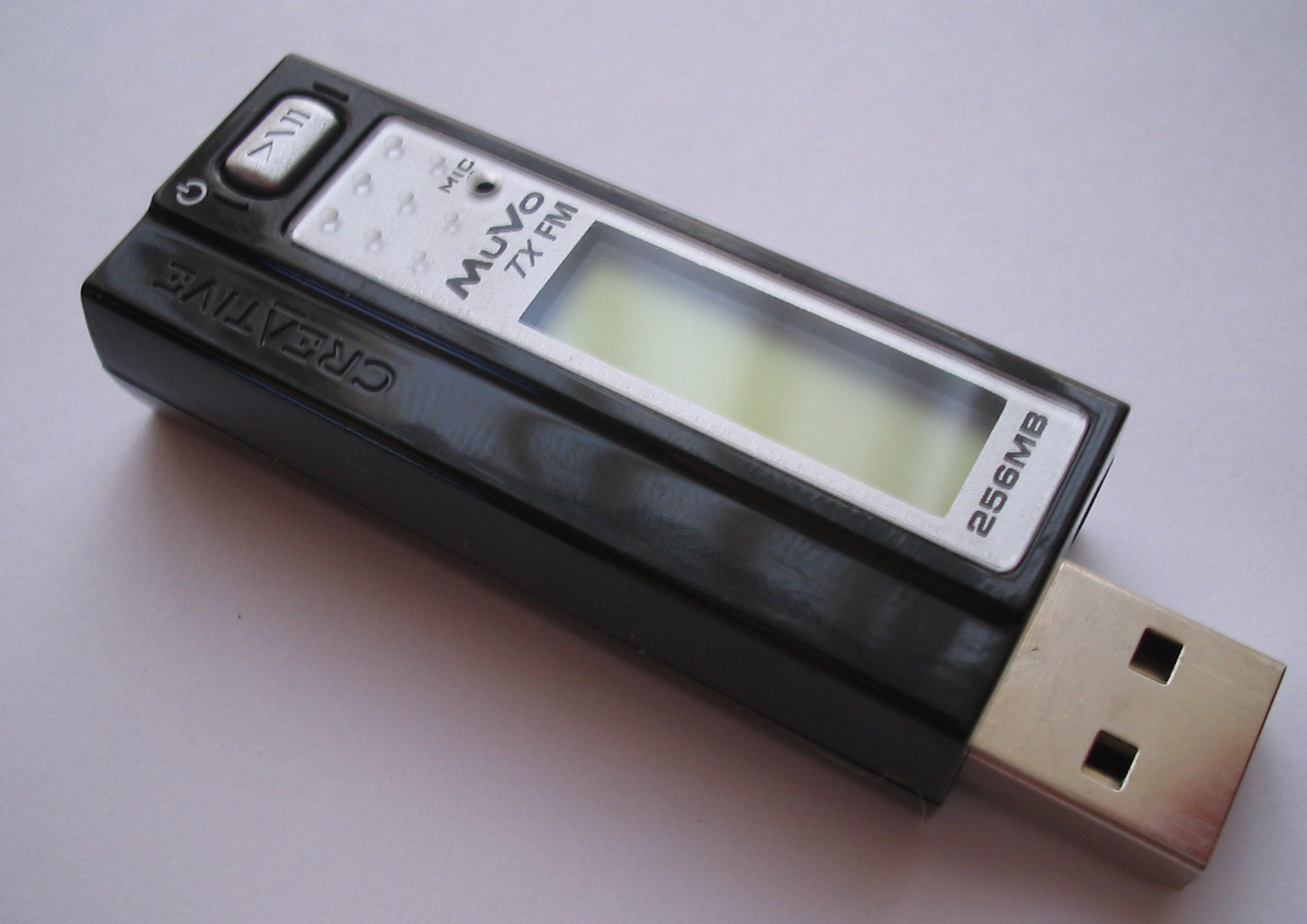The other day I had a conversation with a colleague. He was looking for an opener for a talk - something catchy to illustrate to his audience (mostly finance and banking) that there could well be a need to change their current ways of working.
I told him: Ask your audience to think of a product they feel really passionate about. Something that makes their life so much better than it would be without it. Once they have it, just put the question in the room: How many of you have been thinking of your own bank’s products or services? My assumption - it still needs proving - was, that not many people would connect a great product to their own industry.
After our conversation however, I thought a bit further about the topic and I asked myself: What differentiates a good product from a regular one? What differentiates a great product from a good one? After thinking it through I came up with a personal example I experienced myself which is all about music!
Back in the days of the first MP3-players I was looking for a way to take my most beloved tunes along with me. Those were the times when most people were used to portable CD players. Bulky devices with the promise of X seconds of “Anti-Shock” play which - let’s be honest - never really worked so you ended up with a staccato style music experience as soon as you were driving along a bumpy road or taking a walk. To refresh our memories I took a small detour down “Mini-Disc-Lane” and found the image below to help us bring back this era of music enjoyment. The player I ended up with was very similar to this one:

Boy what an experience!! More than 74 minutes of music on the go! No more jumps in the playback! It could be carried around in your pocket! Happy days! The evolution of portable music playing devices had made a paradigm shift. Goodbye Walkman, Discman and Minidisc.
This era came to an end for me personally, when my MP3-player died a sudden death in the washing machine! I was now looking for a new product and then along came Steve Jobs with his "A thousand songs in your pocket!“ The next paradigm shift had arrived!
Wasn’t this device great?? Sure! However, I was not yet convinced ... Why should I pay such a high price for an American product from a computer company? There were other products with way better specs and good looks. Therefore my next musical companion came in the form of this baby here:

Holy smoke! It could do everything my first player did, just better! My whole music library on the go. Great sound! Touch interface. An illuminated display! And it was quite a bargain! I kept mocking those Apple fanboys paying twice the price for what I got in this device.
Until my wife won an iPod at a sweepstake… sooner or later I was using her iPod over my own player and ended up with buying one myself.
This was the day when I was drawn into the Apple product universe and have stayed there up to the present day. This blogpost is written on a MacBook Pro while a timer on my Apple Watch ticks down until I need to get the laundry. From time to time it might happen that I check the - obviously latest - iPhone lying next to me for the current football scores. But how on earth did I turn from sceptic to fanboy? No matter what your take is on Apple or Steve Jobs in particular, they know a thing or two about Product Ownership. Therefore let me share three important learnings that might benefit you in your endeavours as a Product Owner.
Learning 1: Start with "Why?“
Maybe you are already familiar with Simon Sinek's “Golden Circle”. In case you are not, let me give you a quick summary. Essentially it is all about the order in which you broadcast your message. Whether you’re a politician, giving a speech; a marketeer designing the next advertisement; or a Product Owner, transporting your vision…
It all comes down to three key messages
- What the product can do
- How it can do it
- Why you should get it
Most companies back in the old days - especially in the tech sector - did marketing exactly like this! Creative for that matter was no different. They were promoting the Zen as a music player. Featuring a linear-touch-sensitive controller to navigate your music collection. With 24h battery life - more than ten times than what you could get in other players and 20 GB of capacity for music.
At the same time Apple was claiming:
Every song you’ve ever owned. In your pocket! The new iPod. 2500 song capacity. Incredibly light and slim. Mac or PC compatible. The ultimate digital music player.
Notice the difference? Apple started its message with why! Why might this product make your life better? Only then do they follow up with specs and what this product actually is. Even the specs are not only technical facts and figures. They convey the “How” in a way that it also makes sense to a non-tech-savvy user. After all 2500 songs is every song I own, light and slim, sounds really good and I can even use it with my PC. Great!
It is all about appealing to emotions first - the why, while providing enough detail so people understand the how and the what. As a Product Owner this is important for you whenever it comes to stakeholder management or talking to your Development Team. Your messages will stick way better if you are clear about the “why”. It will help you by putting your customer at the center of your value driven decisions. Last but not least it will provide guidance for your further ongoing product development.
If you want to go into further detail here, I’d recommend reading Simon’s book. His TED talk video is a good starting point as well.
Learning 2: Where’s the customer value?
If you think about the iPod. What is the product the customer is buying here? You might jump to conclusions and say “The device in my pocket playing music obviously!”. I beg to differ. Besides good marketing and looks, what really put the iPod ahead of its competition? It was whole ecosystem within which it co-existed! This was not only a music playing device!. There were other players that could the job as well, if not even better from a technical point of view. However, with an iPod you could also buy your favourite songs and managed them for you using iTunes. More or less seamlessly. With that ecosystem, Apple actually made it easy to use digital music. It was the beginning of the end of pirated MP3s. This was done by putting the customer in the middle of everything and actually solving a problem for him end to end.
What does this mean if you are working as a Product Owner? Be very cautious about assumptions when it comes to how users might interact with your product. Observe them. Understand their behaviors. Best of all out in the wild where your product is used day in, day out. Find out which problem they have or which need they are trying to satisfy and how your product might provide a solution. Be careful about the scope of what you are trying to do. You don’t want to end up with Frankensteins Monster that can do everything in an average fashion and nothing well. On the other hand you don’t want to be too narrow regarding the right feature set. Otherwise it might be that a competitor solves the problem holistically, while you are only dealing with parts of it. To get closer in touch with your customer you might utilize canvases in combination with Design Thinking and Lean Startup approaches to ideation.
Learning 3: Inspiring Product Visions
Can anyone remember the product vision of the Zen Touch? Me neither. What I can remember very clearly though is one simple, yet brilliant statement:
A thousand songs in your pocket!
We talked about starting with why above and of course Product Visioning is closely related to this. There’s a bit more to it though. Aside from product marketing, the Product Vision is one of your most important tools as a Product Owner to provide direction, sometimes referred to as pointing north. Whenever someone involved in your product development efforts is lost or not quite sure what to do, the Product Vision is there to guide them. Imagine the Development Team working on the first iPod. The vision is not very specific when it comes to technical decisions. However: Fitting the device into a pocket and being able to carry it around comfortably helps greatly when deciding how to actually design it. The same accounts for the „thousand songs“ part. Not many hard drives in those days were small enough and still provided enough storage and shock resistance to be taken into account. Therefore the engineers were provided creative freedom - even to go out and find partners to help realise their solution - as well as a clear direction. That’s the north star I was talking about.
I like to say that a good Product Vision appeals to both the heart as well as the brain. It should be motivating so everyone feels pulled by it. However, it also needs to be measurable and quantifiable so you can tell whether you actually getting closer to your goal. Note that a thousand songs in your pocket fulfills those criteria and think about it when working on your own Product Vision. And by the way: The very same is true for Release and Sprint Goals. See them like smaller visions for a shorter timeframe.
What you should think of as a Product Owner
Putting it all together, we have considered three things that can be helpful when embracing professional Product Ownership:
- Thinking like your customer and being clear about the why
- Taking a step back and understand what are the right value creating product features
- Creating, communicating and leading with an inspiring Product Vision
Although your product might not be as sexy as an iPod, be ready as a Product Owner to take on the challenge. Use the three points above as guidance along the way! Even as a banker or financier :).
Scrum on!
